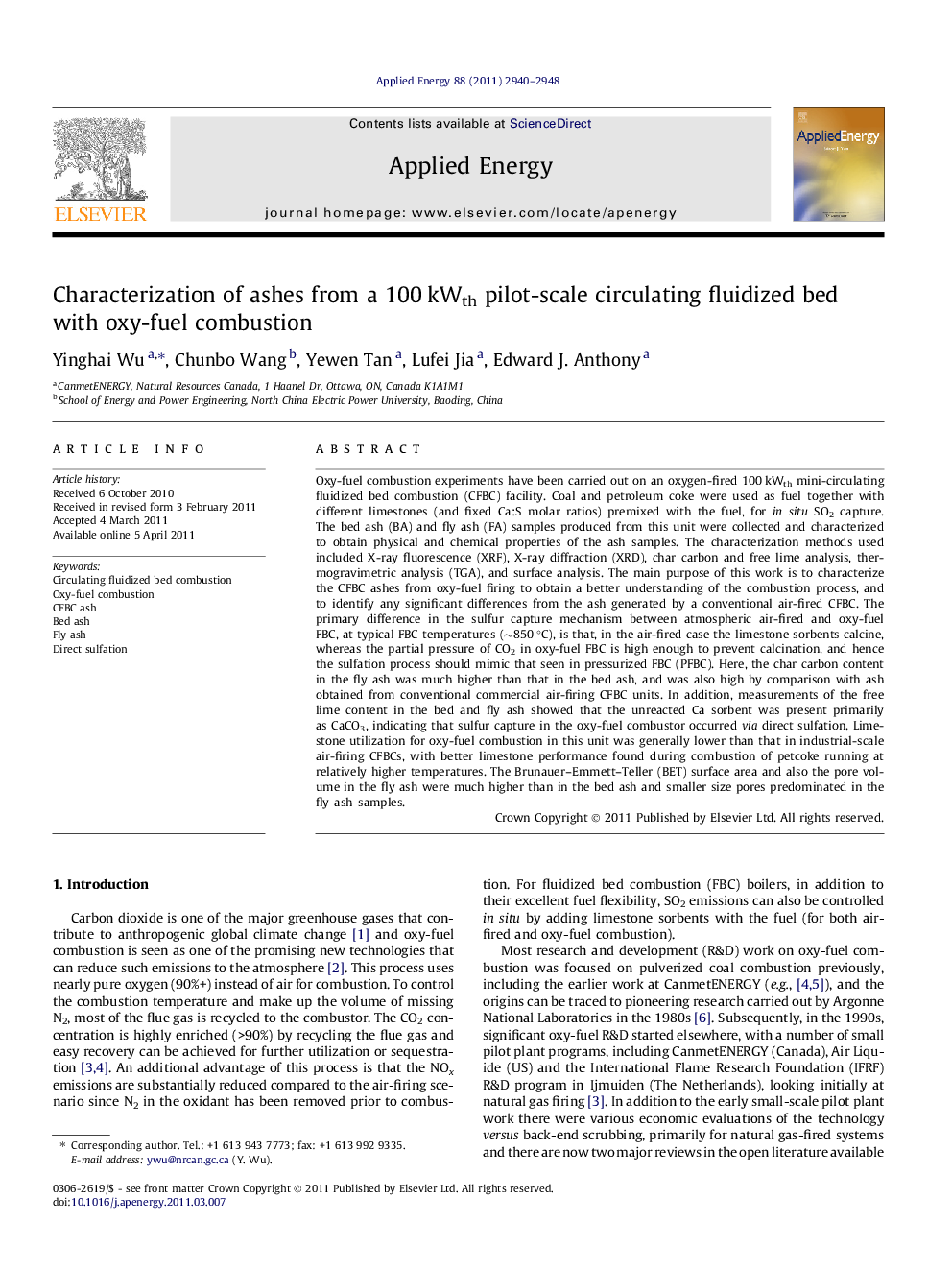| Article ID | Journal | Published Year | Pages | File Type |
|---|---|---|---|---|
| 243765 | Applied Energy | 2011 | 9 Pages |
Oxy-fuel combustion experiments have been carried out on an oxygen-fired 100 kWth mini-circulating fluidized bed combustion (CFBC) facility. Coal and petroleum coke were used as fuel together with different limestones (and fixed Ca:S molar ratios) premixed with the fuel, for in situ SO2 capture. The bed ash (BA) and fly ash (FA) samples produced from this unit were collected and characterized to obtain physical and chemical properties of the ash samples. The characterization methods used included X-ray fluorescence (XRF), X-ray diffraction (XRD), char carbon and free lime analysis, thermogravimetric analysis (TGA), and surface analysis. The main purpose of this work is to characterize the CFBC ashes from oxy-fuel firing to obtain a better understanding of the combustion process, and to identify any significant differences from the ash generated by a conventional air-fired CFBC. The primary difference in the sulfur capture mechanism between atmospheric air-fired and oxy-fuel FBC, at typical FBC temperatures (∼850 °C), is that, in the air-fired case the limestone sorbents calcine, whereas the partial pressure of CO2 in oxy-fuel FBC is high enough to prevent calcination, and hence the sulfation process should mimic that seen in pressurized FBC (PFBC). Here, the char carbon content in the fly ash was much higher than that in the bed ash, and was also high by comparison with ash obtained from conventional commercial air-firing CFBC units. In addition, measurements of the free lime content in the bed and fly ash showed that the unreacted Ca sorbent was present primarily as CaCO3, indicating that sulfur capture in the oxy-fuel combustor occurred via direct sulfation. Limestone utilization for oxy-fuel combustion in this unit was generally lower than that in industrial-scale air-firing CFBCs, with better limestone performance found during combustion of petcoke running at relatively higher temperatures. The Brunauer–Emmett–Teller (BET) surface area and also the pore volume in the fly ash were much higher than in the bed ash and smaller size pores predominated in the fly ash samples.
► Oxy-fuel combustion was carried out in a 100 kWth circulating fluidized bed. ► Coal and petroleum coke are fuels together with limestone added for SO2 capture. ► The ashes produced are characterized and compared with air-firing CFBC ash. ► The dominant calcium compounds in the ash are CaCO3 and CaSO4 rather than CaO.
